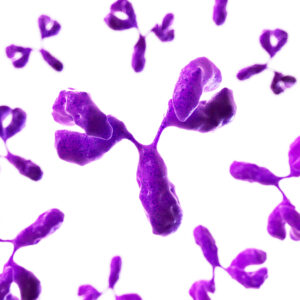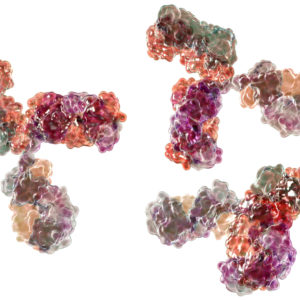O'nyong'nyong Virus
O’nyong’nyong virus is a mosquito-borne RNA virus of the Togaviridae family and was first isolated in June 1959 from serum samples from febrile patients in the northern province of Uganda (Williams & Woodall, 1961). ONNV and CHIKV are both alphaviruses and are closely related, both antigenically and genetically. ONNV infects both anopheline (primarily A. funestus and A. gambiae) and culicine mosquitoes, whereas CHIKV infects only culicine mosquitoes. ONNV is unique in that it is the only alphavirus, and one of few viruses in general, to be transmitted to humans by the bite of an anopheline mosquito. This virus has caused two large-scale epidemics in Africa since it was first described. The first, from 1959 to 1962, affected over two million people in a large swath of Sub-Saharan Africa. The second outbreak occurred in Uganda in 1996 and sporadic cases of the disease have also been reported in other African countries.
To aid in the development of assays that can distinguish O’nyong’nyong virus from other alphaviruses, we offer mammalian expressed virus-like particles expressing key viral surface proteins.
O’nyong’nyong Virus Background
O’nyong nyong virus (ONNV) is a togavirus (family Togaviridae), genus Alphavirus and is primarily transmitted through the bite of Anopheles funestus and Anopheles gambiae mosquitoes. The virus, first isolated in Uganda in 1959, is endemic in sub-Saharan Africa and has caused several major outbreaks both in West and East Africa. The first epidemic occurred in Eastern and Western Africa between 1959 – 1962, affecting over two million people, and the second between 1996 – 1997. Sporadic cases have since been reported in travellers returning from African countries, raising concerns that ONNV may represent an emerging virus with the potential to spread to areas outside the African continent (CDC). The disappearance of the virus between epidemics suggests that the virus is maintained in an enzootic cycle, but no vertebrate reservoir has been reliably identified. Serological studies suggest that domestic livestock and some rodent species may be likely candidates.
The name O’nyong’nyong is derived from the Nilotic language of Uganda and Sudan and means “weakening of the joints”. ONN is a self-limiting febrile (illness that suddenly occurs with an onset of fever) viral disease, meaning that it follows a temporary course and usually will resolve by itself without the need for medical intervention. It is characterized by severe joint pain, followed by a maculopapular rash (flat, red area on the skin that is covered with small confluent bumps) in 60-70% of cases. Buccal and palatal enanthema (rash) can occur and unapparent infections are common. The incubation period for ONNV infection is approximately 8 weeks. Symptoms may last from 1 week to several months, which has an economic impact in regions affected due to loss of working days. The disease is often confused with measles, malaria, dengue, rubella or chikungunya. ONNV is closely related to chikungunya virus (CHIKV), although ONNV has a more restricted geographical range, being limited to the African continent. A recent study suggested that both CHIKV and ONNV are endemic in coastal East Africa. Two major clades of ONNV have been identified and Igbo Ora virus is a strain of ONNV that was isolated in western Nigeria.
Currently, there is no antiviral therapy for the treatment of symptomatic cases of ONNV, and no licensed prophylactic vaccine to prevent ONNV infection. Diagnosis of ONNV in humans is achieved using clinical criteria and serological methods to measure O’nyong’nyong specific IgM levels of infected patients. Studies suggest that vaccine candidates against CHIKV may also confer protection against ONNV. The importance of ONNV is that it is a virus which only appears every few decades, but when it does appear, it causes a widespread epidemic.
O’nyong’nyong Virus Antibodies
The Native Antigen Company have manufactured a pair of O’nyong’nyong (ONNV) mouse monoclonal antibodies against ONNV VLPs. These antibodies are suitable for use in assay development and vaccine research. We also have an anti-Chikungunya virus VLP antibody which cross-reacts with ONNV VLPs.
Questions?
Check out our FAQ section for answers to the most frequently asked questions about our website and company.


